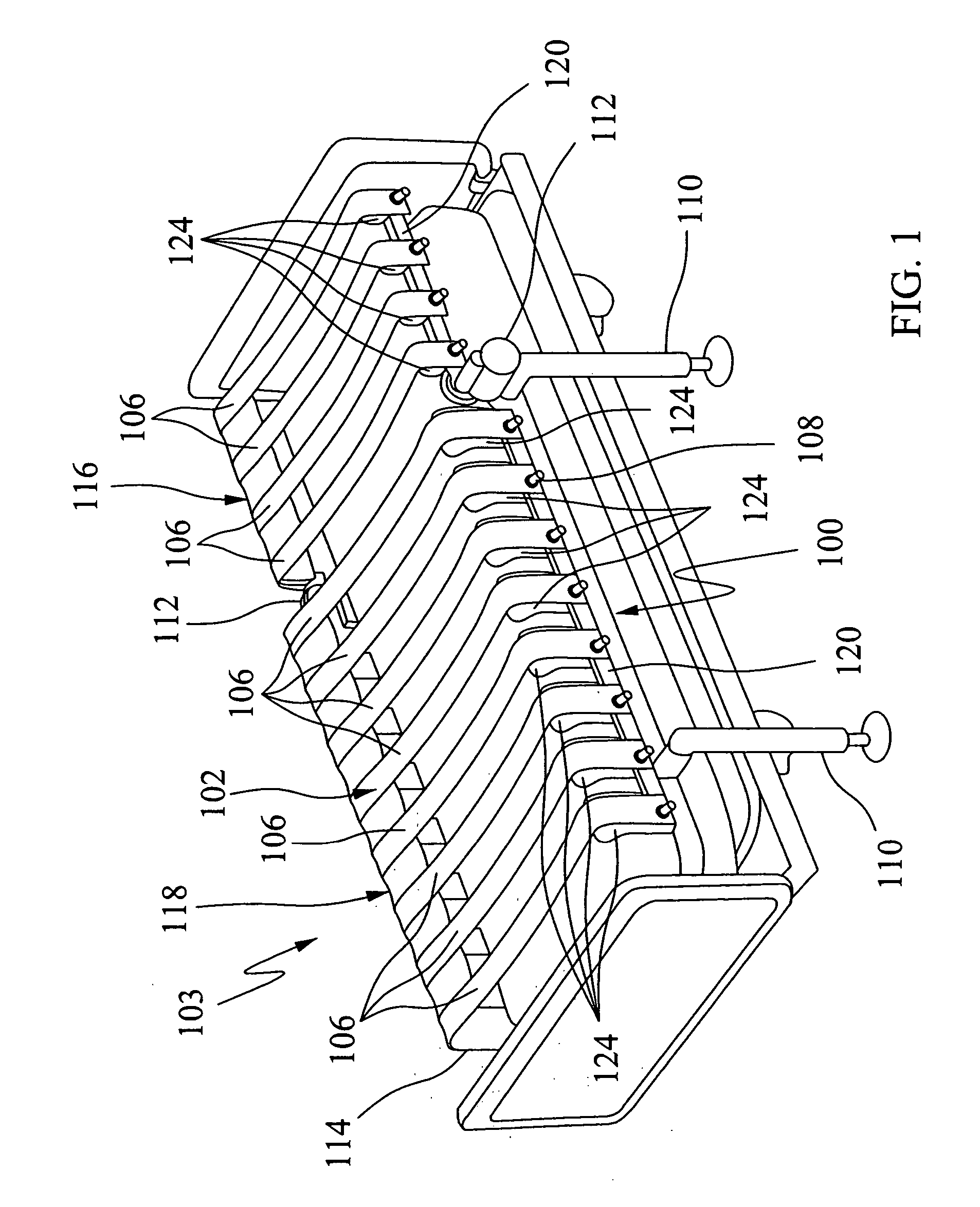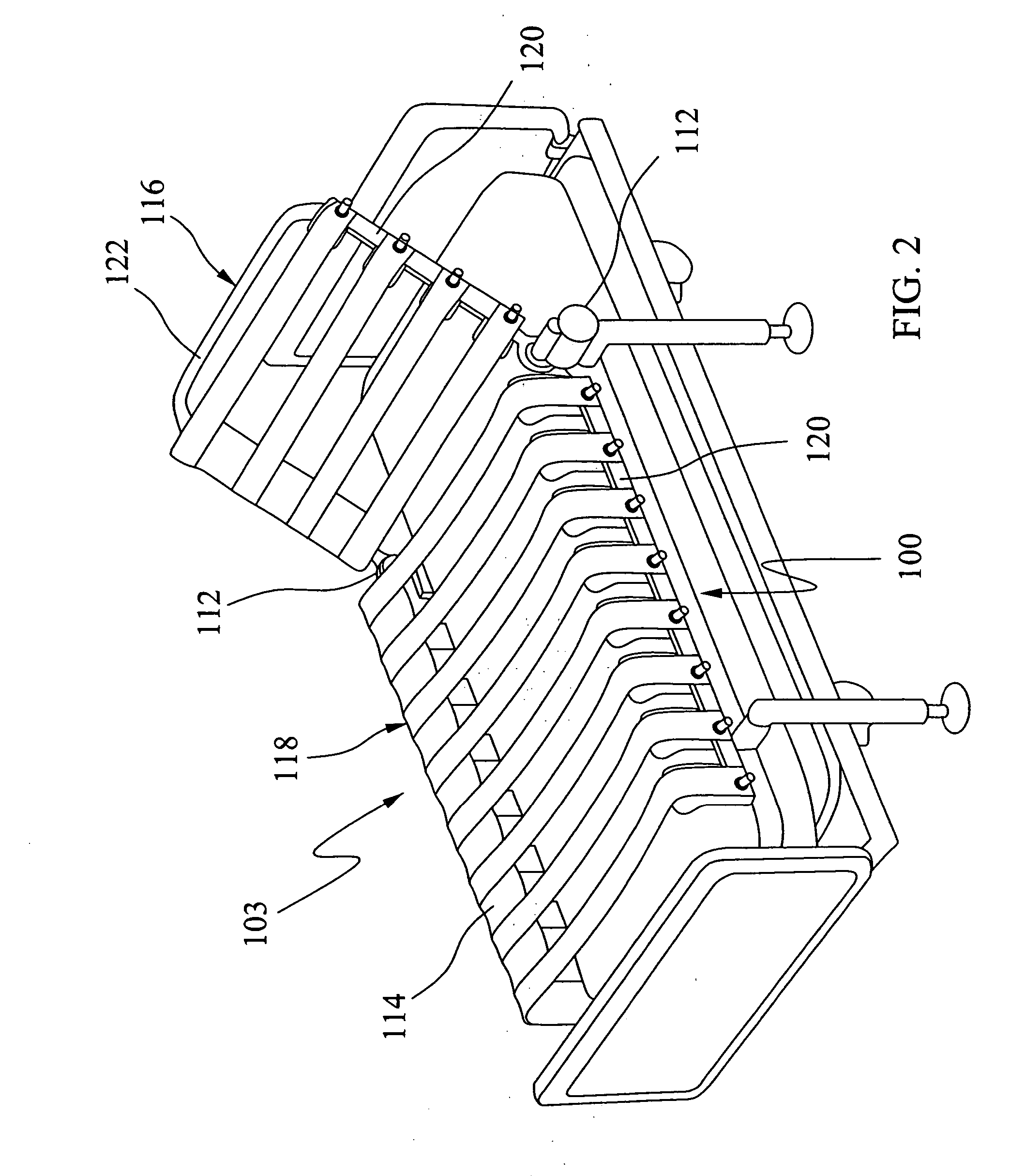Patient transfer system
a patient transfer and patient technology, applied in the field of patient transfer system, can solve the problems of increasing the risk of low back pain and musculoskeletal injury with the frequency of patient handling, workplace injury, and caregiver injury in the home care setting, and achieve the effect of increasing the vertical distan
- Summary
- Abstract
- Description
- Claims
- Application Information
AI Technical Summary
Benefits of technology
Problems solved by technology
Method used
Image
Examples
Embodiment Construction
[0032] The present invention is directed to a patient transfer system utilizing the concept of creating a “hollow space” between the patient and the surface on which he or she is supported and then extracting the patient using the hollow space to insert elongated patient support / transfer components such as tines of a lift cart, straps of an extraction device, etc. The patient support assembly of the present invention as depicted in the following exemplary embodiments is designed to: (a) enable the safe raising and lowering of a patient above his or her bed; (b) allow for insertion and removal of a mobile supporting expedient under the patient; and (c) when in the lowered position, provide a comfortable surface for the patient.
[0033] The patient transfer device of the present invention as depicted in the following exemplary embodiments is designed to: (a) enable the safe movement of patients requiring substantial assistance into and out of a bed and (b) provide a mobile, multi-posit...
PUM
 Login to View More
Login to View More Abstract
Description
Claims
Application Information
 Login to View More
Login to View More - R&D
- Intellectual Property
- Life Sciences
- Materials
- Tech Scout
- Unparalleled Data Quality
- Higher Quality Content
- 60% Fewer Hallucinations
Browse by: Latest US Patents, China's latest patents, Technical Efficacy Thesaurus, Application Domain, Technology Topic, Popular Technical Reports.
© 2025 PatSnap. All rights reserved.Legal|Privacy policy|Modern Slavery Act Transparency Statement|Sitemap|About US| Contact US: help@patsnap.com



